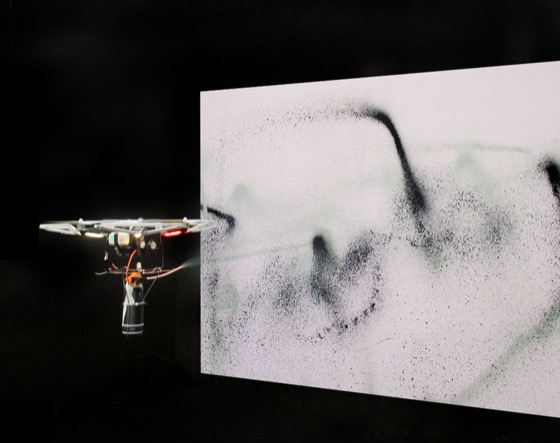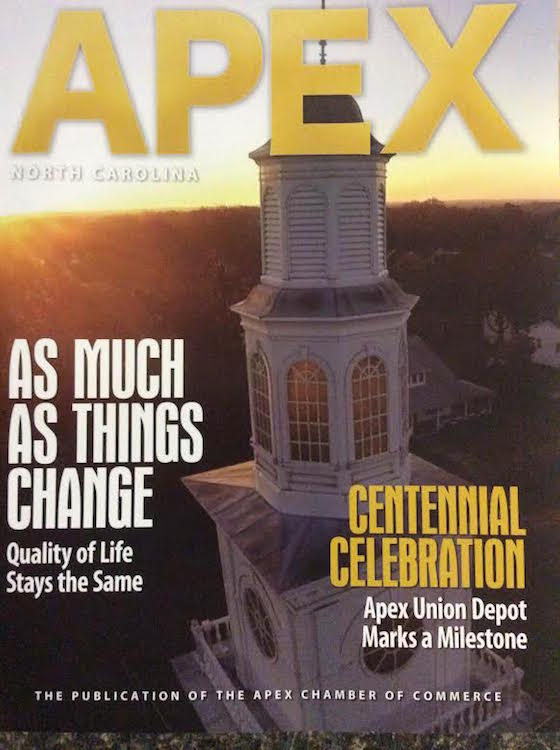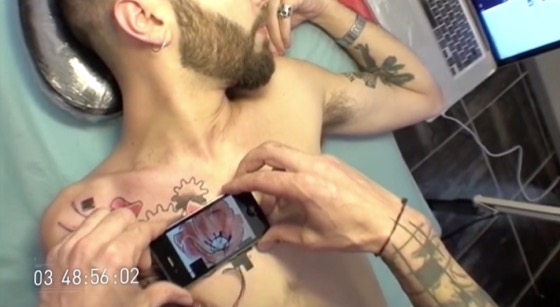In today’s art room, technology has become a method or tool for delivering and displaying art but not an actual part of the art. We seek out apps that help our students create animations or pixelated images. We utilize programs to manipulate photos and create computer graphics. These are ways that we allow our students to incorporate technology into the art, but that’s not the same as creating art using technology.
Let’s take a look at how contemporary artists are using technology to create art and review some ideas that might help our students do the same.
Painting with Drones
The term drone conjures up images ranging from wartime flyovers to deliveries from Amazon. However, in the simplest of terms, a drone is essentially an unmanned flying vehicle that can be operated by anyone, even an artist. Using a drone to create art is exactly what street artist KATSU is doing. He designed a method for attaching spray paint to a quadcopter allowing him to apply paint at unimaginable and humanly unobtainable heights.

Classroom Application
KATSU proved that working with drones need not be left to the US Army or Amazon Prime Air. Our students already own drones and with the right encouragement from their art teachers, could be contemplating new ways to incorporate the drones into the art making process. As an example, the Apex Chamber of Commerce recently published their annual magazine with a cover photo taken by a high school student. The image, a bird’s-eye view of the downtown area, was taken from 300 feet and captured using a GoPro camera attached to a drone.

Hybridity
Contemporary artists have been quick to incorporate new media into their work. Sound, animation, digital photography and video projections are commonly used to create multi-media works and installations. One artist well know for combining new media and art is Tony Oursler. He projects video of up-close faces onto large stuffed pillows and otherwise faceless dolls, creating creepy yet whimsical works.
Classroom Application
Many art rooms today have access to laptops, LCD projectors and sometimes even more advanced types of technology such as document cameras and SMART Boards. As teachers, we use these technologies as they were originally intended, projecting and displaying information to our students. If we stopped thinking of these instruments as the devices they are, and instead saw them as art supplies, we could open the creative floodgates for our students.
Net Art
The origin of Net Art was conceived with the birth of the web. Net artists traditionally use web domains to display digital imagery that goes beyond computer graphics and incorporates the “Internet” experience. Today, net artists are transcending the web browser and integrating mobile devices, social media, and even physical space into their art. Karl Marc is one such artist. He created what might be considered the world’s first animated tattoo. The tattoo that Marc designed includes a QR code. When a smartphone with a QR reader is placed on the tattoo, a YouTube video is opened. The video aligns perfectly with the tattoo therefore becoming part of the art. To see it in action click here.

Classroom Application
Our students might be a little young for tattoo art, but many of them have smartphones capable of reading QR codes. We need to consider what other ways our students might combine their cell phones, QR codes or even social media sites to create new and innovative art projects.
While the ever changing world of technology can seem so strange, we need to understand that the Millennials have never known a world without it. Creating art with the technology in their everyday lives might be as comfortable to them as holding a paintbrush is for us. We only need to provide them permission to explore the possibilities. Then, we can stand back and be amazed at what they create.
{image source}{image source}
How have you incorporated technology in your class that has gone beyond the iPad?
Have your students used video, projection or new media to create works of art?
Magazine articles and podcasts are opinions of professional education contributors and do not necessarily represent the position of the Art of Education University (AOEU) or its academic offerings. Contributors use terms in the way they are most often talked about in the scope of their educational experiences.




